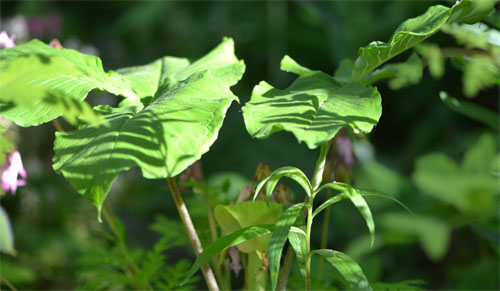Seeing culver’s root bloom in the garden brought out the shopping instinct in me – I just returned from the garden shop at Garden in the Woods and got a few more. The store bought plants have already bloomed and have been cut back, but next year they will be on a Cape Cod schedule. The plants I added a year or two ago are still blooming strong, and the plants are 4 to 5 feet tall. They are thriving with no visible predation from insects nor can I detect any blemishes or disease – ideal in my book as I don’t use pesticides in the garden. The established plants are in a fairly sunny spot, and I may be pushing the limits by putting the new plants in partial shade. They should tolerate this, but time will tell. The light green leaves and the stately upright nature of Veronicastrum virginicum make it ideal as a centerpiece, and that could be even better if you have a few grouped together. Hindsight is 20-20, of course, and I did not follow my own advice in my garden: The plants are mixed in with joe pye weed and marsh milkweed. Joe pye weed is winning the height battle and among the milkweed culver’s root seemed to provide the lighter accents. However, now that the milkweed has turned to seed, mostly, the towering blooms of culver’s root are finally demanding the focus they deserve. I am yet to find out if the plants will naturalize – I have them in a spot where I am not too concerned with formal borders and restraints, so they can go at it and mix it up with the other natives. This may not be a bad idea as the plant is threatened in Massachusetts and New York, and endangered in Vermont. Bees absolutely love this plant but I have not seen many other critters partake.
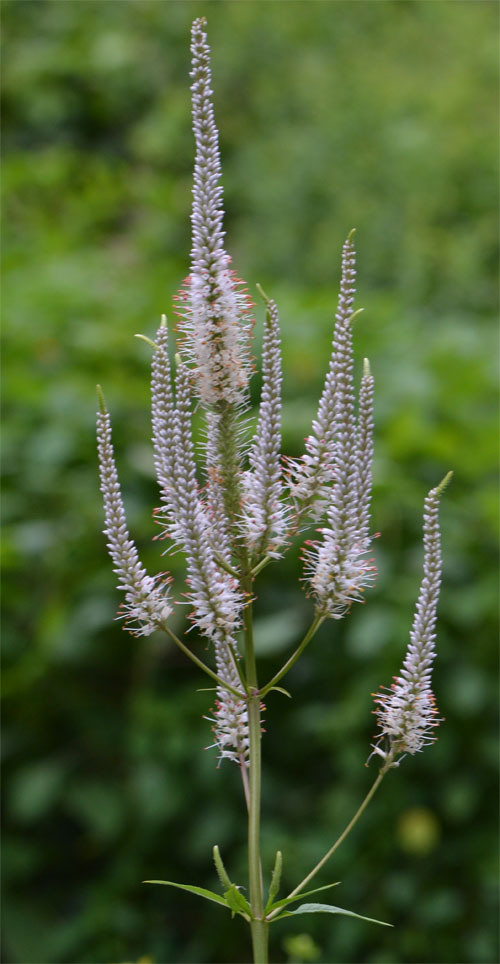
I want to add that for the first time I have seen culver’s root in some mainstream garden shops, although they seem to concentrate on the varieties with blue and purple hues. Nothing wrong with that as those colors appear in the wild within the species as well.
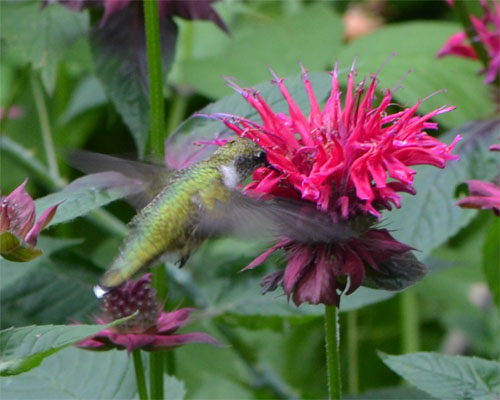 A female rubythroated hummingbird is enjoying the nectar from a pink variety Monarda didyma (scarlet beebalm). Several hummingbirds, mostly females, have been visiting the beebalm colony. They are very territorial and don’t like to share their food source. I’ve seen several skirmishes and chases this summer – they seem to occur almost daily. I have added several different areas with red, blue and pink flowering plants (beebalm, cardinal flower, blue lobelia, etc.) in the hopes of diffusing these territorial disputes. There’s enough for everyone!
A female rubythroated hummingbird is enjoying the nectar from a pink variety Monarda didyma (scarlet beebalm). Several hummingbirds, mostly females, have been visiting the beebalm colony. They are very territorial and don’t like to share their food source. I’ve seen several skirmishes and chases this summer – they seem to occur almost daily. I have added several different areas with red, blue and pink flowering plants (beebalm, cardinal flower, blue lobelia, etc.) in the hopes of diffusing these territorial disputes. There’s enough for everyone!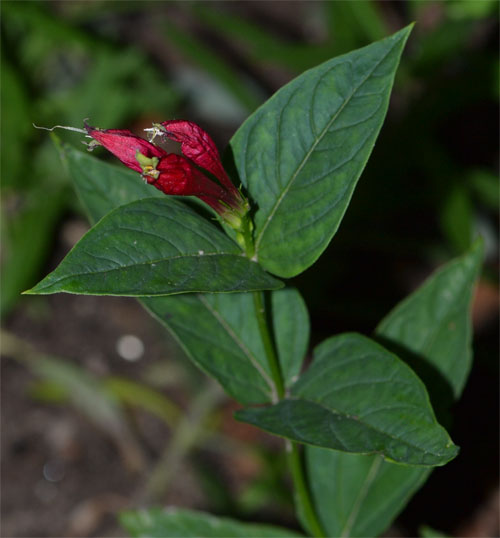
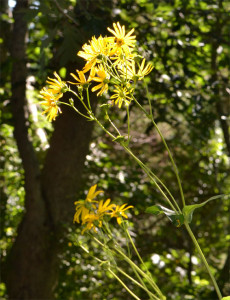 I brought 3 of these plants home in April, after a visit at NEWFS Garden in the Woods in Framingham. There was not much more to go on than a few basal leaves and the attendant mentioning that “these” would get very tall. That was enough to intrigue me and I put them next to the porch, where they would get ample sun most of the day, and much more if they kept their promise to rise up high – if that was the case they would get some bonus sunlight peeking over the roof of our house. Silphium perfoliatum did not disappoint. They are now decidedly over 6 feet high with one or two stems reaching well over 8 feet. A plant produces multiple stems with layered coarse cuplike leaves. Once the first flower blooms, new buds appear, and these rise a half a foot above to flower. This process is repeated a few more levels. Now in full bloom Silphium perfoliatum is a favorite of bees, and it has an attractive smell that will entice human noses as well. The leaves are coarse so I don’t think I have to worry about predation by mammals (it is listed as deer resistant)
I brought 3 of these plants home in April, after a visit at NEWFS Garden in the Woods in Framingham. There was not much more to go on than a few basal leaves and the attendant mentioning that “these” would get very tall. That was enough to intrigue me and I put them next to the porch, where they would get ample sun most of the day, and much more if they kept their promise to rise up high – if that was the case they would get some bonus sunlight peeking over the roof of our house. Silphium perfoliatum did not disappoint. They are now decidedly over 6 feet high with one or two stems reaching well over 8 feet. A plant produces multiple stems with layered coarse cuplike leaves. Once the first flower blooms, new buds appear, and these rise a half a foot above to flower. This process is repeated a few more levels. Now in full bloom Silphium perfoliatum is a favorite of bees, and it has an attractive smell that will entice human noses as well. The leaves are coarse so I don’t think I have to worry about predation by mammals (it is listed as deer resistant)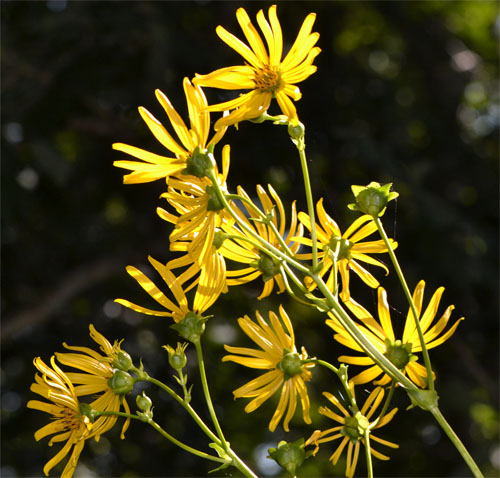



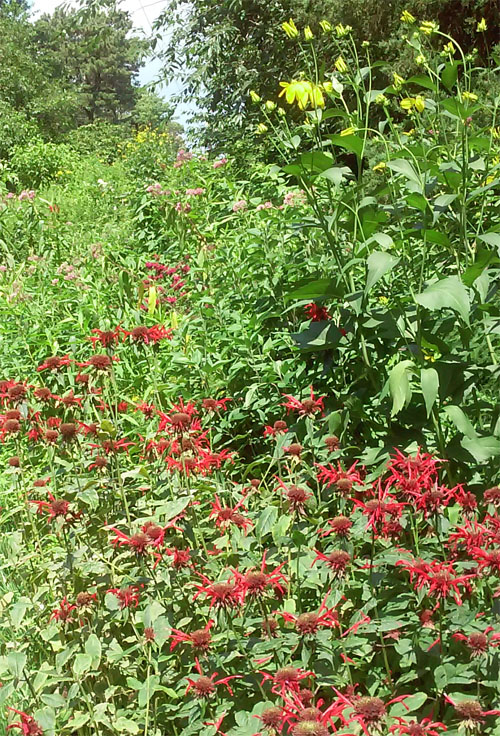
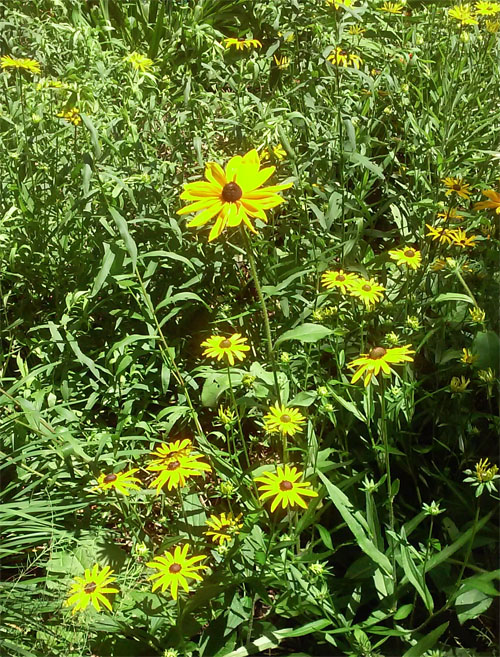
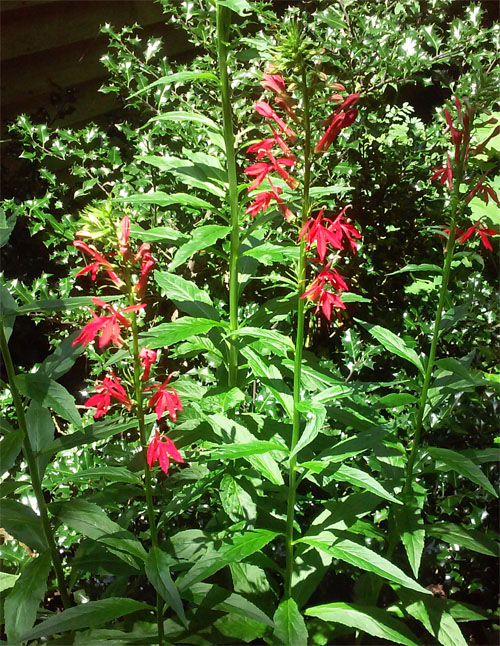
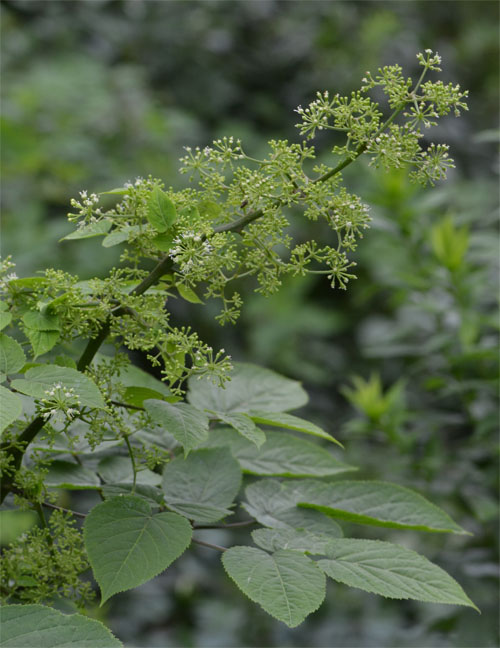
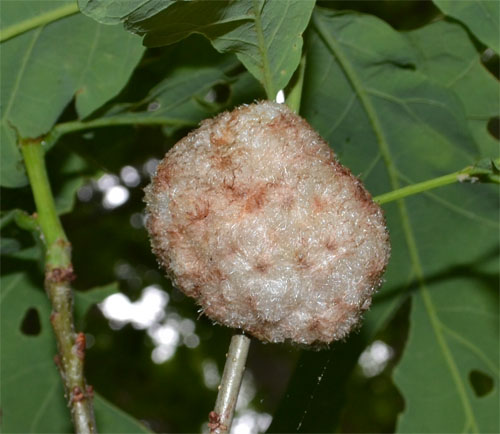
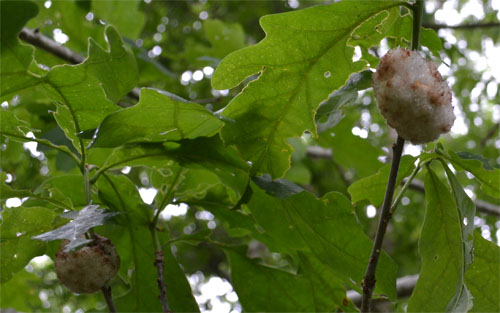
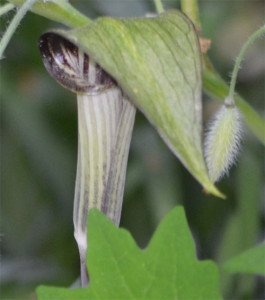 “triphyllum” is the defining feature of this member of the Arum family, as all you initially see is the tripartite leaves, of which there are only two. Last year one plant emerged with just a single leaf and I did not bother trying to identify what I was dealing with. Now I have three plants in different areas of the woodland garden, and they are all about a foot high, and this time they have the flower which characterizes this species. Arisaema triphyllum likes damp and rich woodland. How far my garden has come from the days when only commercial plantings and dry soil were in evidence. The jack-in-the-pulpits just appeared one day, finding a habitat they could thrive in. The other defining element is the hooded “pulpit”, which is a death trap for insects. The plant does not feed on the nutrients of these insects like a venus fly trap does. They just don’t seem to care either way if an insect makes it out or not. The bugs are unable to make it up the slippery slopes.
“triphyllum” is the defining feature of this member of the Arum family, as all you initially see is the tripartite leaves, of which there are only two. Last year one plant emerged with just a single leaf and I did not bother trying to identify what I was dealing with. Now I have three plants in different areas of the woodland garden, and they are all about a foot high, and this time they have the flower which characterizes this species. Arisaema triphyllum likes damp and rich woodland. How far my garden has come from the days when only commercial plantings and dry soil were in evidence. The jack-in-the-pulpits just appeared one day, finding a habitat they could thrive in. The other defining element is the hooded “pulpit”, which is a death trap for insects. The plant does not feed on the nutrients of these insects like a venus fly trap does. They just don’t seem to care either way if an insect makes it out or not. The bugs are unable to make it up the slippery slopes. 